Transformación del dominio de habilidades mediante el aprendizaje entre pares
Historia de un cliente
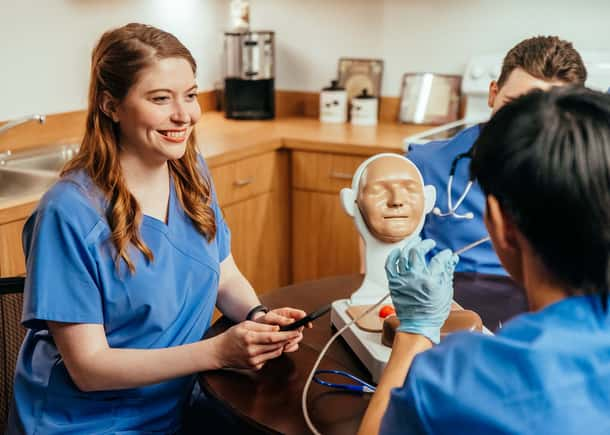
Historia de un cliente

La implementación de un enfoque innovador de aprendizaje entre pares utilizando SimCapture for Skills ayudó a UMass a incrementar las tasas de aprobación en el primer intento y a perfeccionar su proceso de recuperación.

El Centro de Educación e Investigación Clínica de UMass Boston brinda servicios principalmente a unos 600 estudiantes de grado de enfermería en su laboratorio.
El desafío
Los programas de enfermería están bajo la creciente presión de preparar a sus estudiantes para una transición exitosa a la práctica. Para garantizar la preparación de los estudiantes, la Universidad de Massachusetts en Boston se ha estado centrando recientemente en la evaluación de su programa de simulación y en cómo se vincula con la práctica clínica.
"El uso de datos y evaluaciones para medir el desempeño de los estudiantes puede ayudar a garantizar que cumplan con los objetivos en los que les decimos a nuestros socios clínicos que son competentes", explica Rosemary Samia, MSN, RN, CNS, CHSE, Directora del Centro de Educación e Investigación Clínica de UMass Boston.
- Rosemary Samia, MSN, RN, CNS, CHSE
Directora del Centro de Educación e Investigación Clínica de la Universidad de Massachusetts Boston

Rosemary quería asegurarse de que los datos que estaban recopilando fueran significativos (no solo informes y hojas de cálculo) y de que al final ayudarían a asegurar que sus estudiantes estuvieran desarrollando las competencias que necesitaban para la práctica. "Deberíamos ser capaces de ver la progresión de nuestros estudiantes mejorando", dice Rosemary. "Queremos asegurarnos de que progresen de manera que, cuando se gradúen, sean principiantes seguros".
La solución
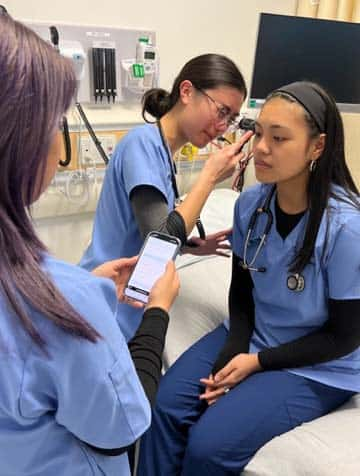
Para el desarrollo de habilidades en los cursos de evaluación de la salud y fundamentos de enfermería, Rosemary y su equipo decidieron adoptar SimCapture for Skills: una solución que acerca al personal docente a los estudiantes al combinar la eficacia de la metodología de aprendizaje entre pares con herramientas digitales de evaluación.
Los estudiantes se dividieron en grupos de 3 para practicar una habilidad específica, como la evaluación cardiovascular. Hicieron cambio de roles: cada estudiante se turnó para ser el aprendiz, el facilitador y el paciente. Eso les dio una exposición repetitiva a la habilidad mientras la realizaban, evaluaban a otro estudiante que la realizaba y se la realizaban a ellos. El texto de sugerencia programado en las listas de verificación ayudó a los estudiantes a mantenerse enfocados en la tarea y realizar evaluaciones precisas de sus compañeros.
Al observar los puntajes de las pruebas de los estudiantes luego de implementar este enfoque, Rosemary descubrió que los docentes de laboratorio que usaban el aprendizaje entre pares de forma regular tenían estudiantes con resultados mucho más altos en el primer intento que otros grupos. Y, en general, las tasas de recuperación disminuyeron significativamente.
En UMass Boston, los estudiantes de enfermería deben aprobar sus exámenes de habilidades de enfermería al 100 %. "Tenemos un alto estándar en UMass", explica Rosemary. "Si los estudiantes no alcanzan esa meta, deben regresar al laboratorio".
Antes de que se les permita volver a realizar la prueba, los estudiantes deben completar la capacitación obligatoria de recuperación. En el pasado, la recuperación era un proceso muy laborioso: pequeños grupos de 1 o 2 estudiantes se reunían durante 2 horas con un estudiante de posgrado.
Al igual que todas las demás escuelas de enfermería que actualmente enfrentan la escasez de docentes y el aumento de las cohortes, UMass finalmente descubrió que su proceso de recuperación ya no era sostenible. "A medida que nuestros cursos se hicieron más grandes, no teníamos el tiempo, el espacio ni el personal docente necesarios para ofrecer la cantidad de recuperación necesaria", recuerda.
Necesitaban encontrar una manera de que más estudiantes recuperaran con menos profesores, sin comprometer la calidad de la recuperación.
En un semestre reciente, 160 estudiantes tomaron un examen de salud a mitad de período, y 60 de los estudiantes no aprobaron con el 100 % requerido. Rosemary y su equipo decidieron intentar utilizar SimCapture for Skills para que esos estudiantes recuperaran de manera más eficiente.
Ayudados por 2 estudiantes de posgrado, 30 estudiantes ingresaron al laboratorio a la vez y se dividieron en grupos de 3 para practicar entre pares. Al final de la hora, los estudiantes volvieron a realizar la prueba de la habilidad.
Los resultados fueron inmensamente exitosos: 51 de los 60 estudiantes aprobaron después de 1 hora de recuperación usando SimCapture for Skills.
Habían encontrado una forma de que 30 estudiantes por hora recuperaran eficazmente con menos docentes. Con el antiguo proceso de recuperación, eso habría requerido 120 horas de instrucción.
"Vimos un éxito tremendo", dice Rosemary "Disminuyó el tiempo que necesitábamos dedicar a la recuperación y a reservar espacio en el laboratorio".
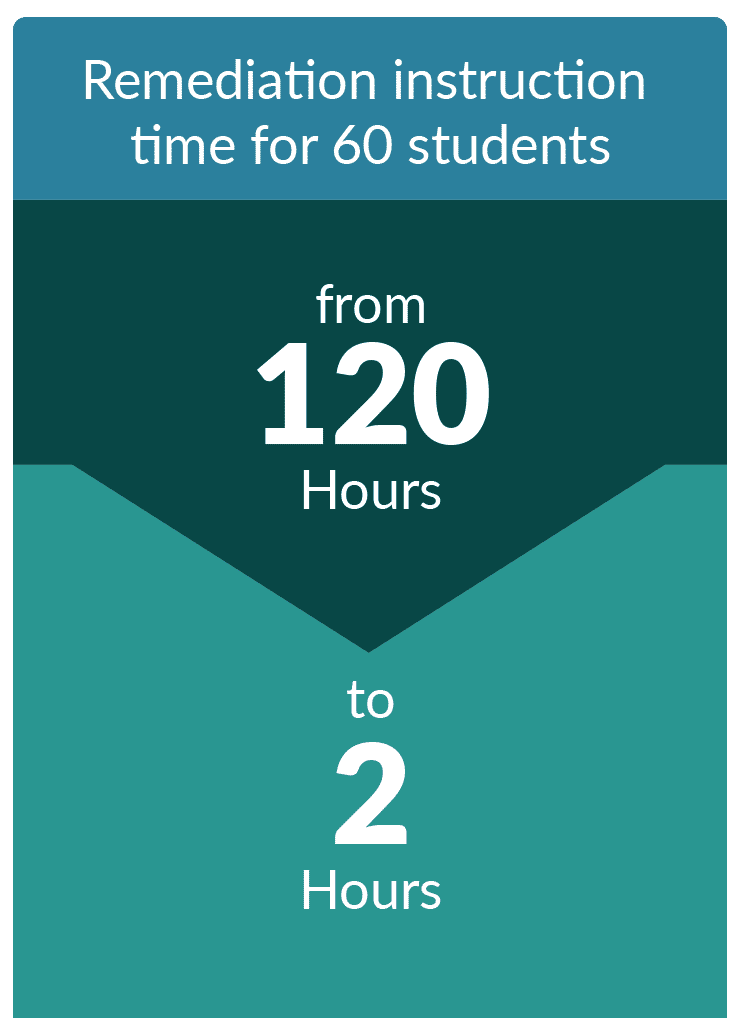
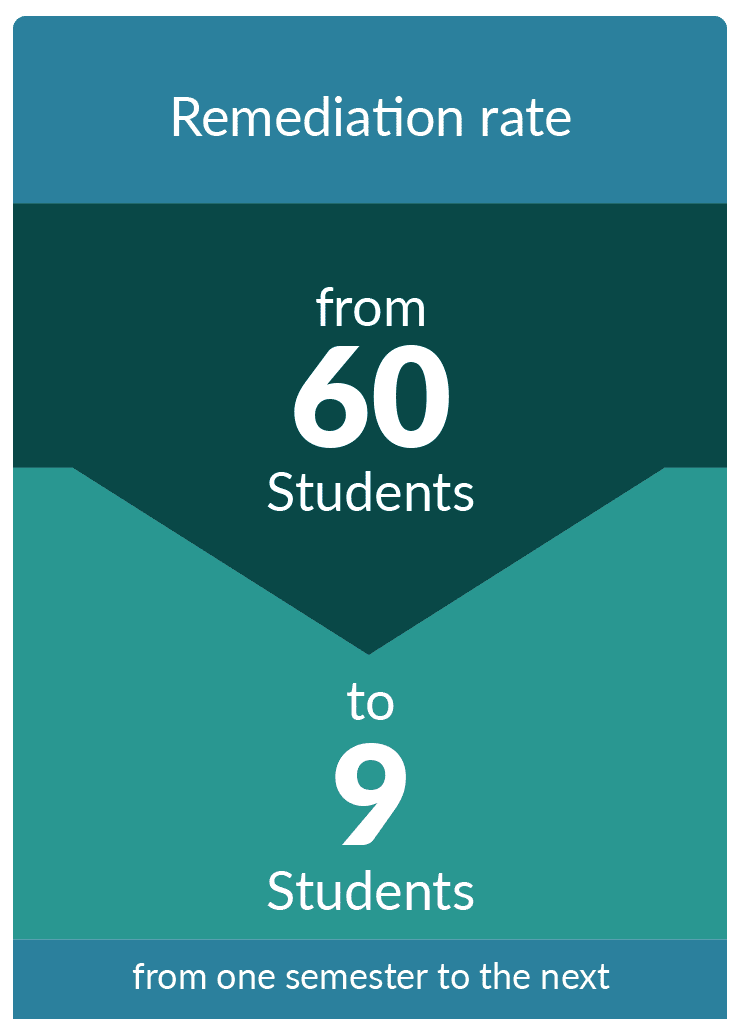
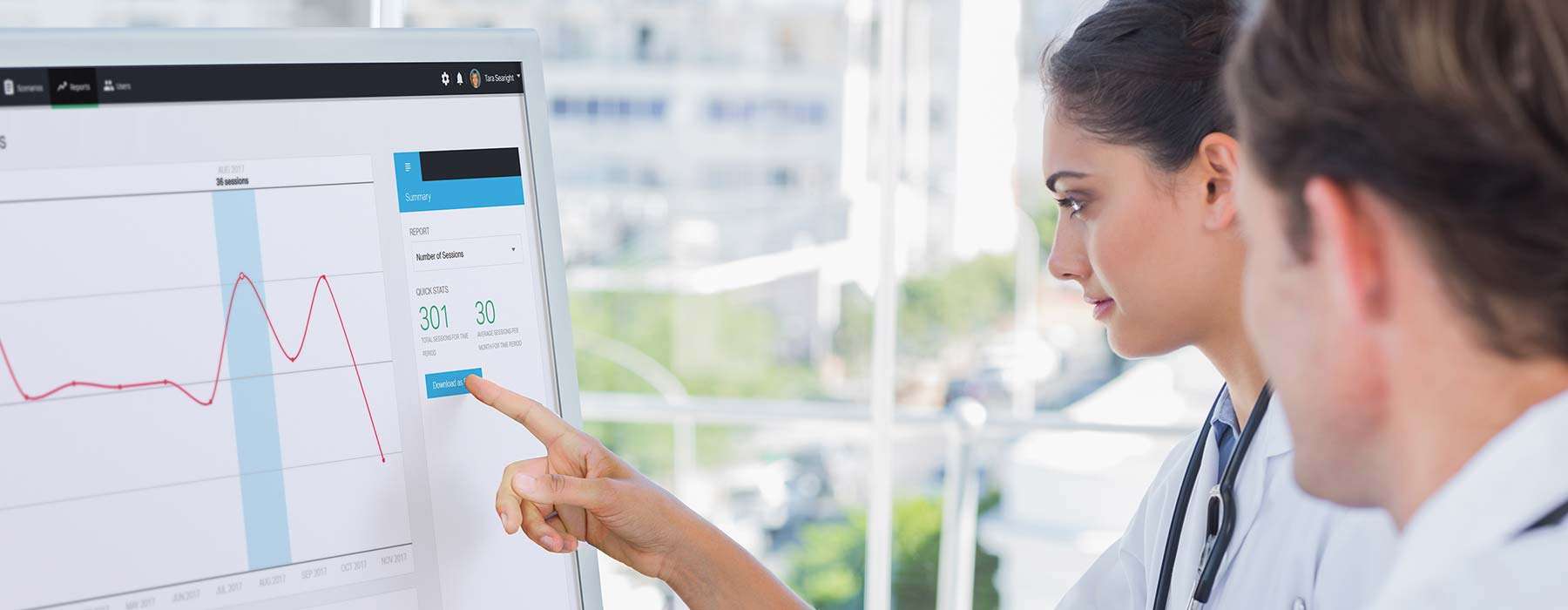
SimCapture for Skills ha facilitado la mejora continua en la enseñanza en UMass, al proporcionar datos significativos sobre el progreso de los estudiantes en los laboratorios semanales.
Usando datos de las listas de verificación electrónicas de SimCapture for Skills, los profesores pueden ver dónde tienen más problemas los estudiantes para poder ajustar la enseñanza la semana siguiente. Además, la herramienta proporciona visibilidad sobre cómo los estudiantes están utilizando su tiempo de práctica.
"Hemos tenido una mejora significativa en la enseñanza impartida", nos dice Rosemary.
UMass también está aprovechando los datos de las evaluaciones en sus simulaciones de alta fidelidad. "Comenzamos con sus habilidades psicomotoras en el laboratorio y luego las extrapolamos a la simulación", explica.
Y los datos que están recopilando no se limitan a docentes que evalúan a los estudiantes, sino también a estudiantes que evalúan a los docentes utilizando herramientas verificadas después de sus simulaciones y a docentes que se evalúan entre sí.
"Realmente podemos hacer grandes cambios", dice ella. "Los docentes pueden tomar esos datos y ver dónde hay espacio para mejorar y dónde están sus fortalezas. Y una vez que captamos eso, podemos unir a los docentes, podemos agrupar a los estudiantes que son realmente fuertes en un área, [y] tenemos todo un programa de tutoría de enfermería que ha surgido de esto. Puede cobrar vida propia".
"Sus datos realmente cuentan una historia", afirma Rosemary. "Pero hay que ser capaz de leer lo que le dicen los datos, y luego hacer algo con eso".
Los estudiantes pueden practicar juntos para dominar las habilidades.
El aprendizaje entre pares, combinado con los datos de desempeño, puede ayudar a enfrentar los desafíos de las cohortes en crecimiento, el espacio limitado en los laboratorios y la disminución del número de docentes.
Los datos de evaluación y valoración, desde la práctica de habilidades hasta las simulaciones de alta fidelidad, cuentan una historia significativa.
Si le interesa comenzar a utilizar más datos en su programa, el consejo experto de Rosemary para usted es empezar poco a poco.
"Mire lo que ya está recopilando. ¿Está en papel? ¿Qué está haciendo con eso? Quizás pasar a una captura electrónica le facilitaría el análisis.
Comience con algo que sea manejable. No podrá hacer todo a la vez; simplemente elija una cosa, comience por ahí y haga cambios. No sienta que tiene que hacerlo bien en el primer intento. [Nuestro programa] ha estado en desarrollo durante dos años, y estamos constantemente cambiando cosas para mejorarlo.

pdf | 1.79 MB
A Brief Introduction to the Concept, Pedagogy and Research By: Michael Sautter and Brynjar Foss April 2020
Regístrese para recibir actualizaciones de Laerdal Medical por correo electrónico. Puede identificar sus intereses y recibir nuevos contenidos educativos, actualizaciones, información sobre eventos y mucho más.